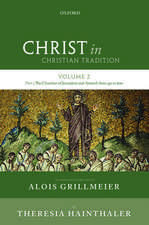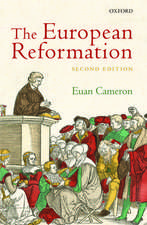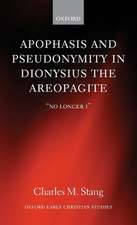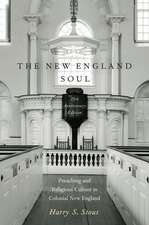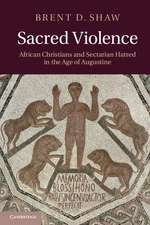The Cult of the Virgin Mary in Early Modern Germany: Protestant and Catholic Piety, 1500–1648
Autor Bridget Healen Limba Engleză Paperback – 5 noi 2014
| Toate formatele și edițiile | Preț | Express |
|---|---|---|
| Paperback (1) | 320.17 lei 6-8 săpt. | |
| Cambridge University Press – 5 noi 2014 | 320.17 lei 6-8 săpt. | |
| Hardback (1) | 758.22 lei 6-8 săpt. | |
| Cambridge University Press – 21 noi 2007 | 758.22 lei 6-8 săpt. |
Preț: 320.17 lei
Nou
Puncte Express: 480
Preț estimativ în valută:
61.27€ • 63.89$ • 50.92£
61.27€ • 63.89$ • 50.92£
Carte tipărită la comandă
Livrare economică 20 martie-03 aprilie
Preluare comenzi: 021 569.72.76
Specificații
ISBN-13: 9781107449947
ISBN-10: 1107449944
Pagini: 358
Ilustrații: black & white illustrations
Dimensiuni: 152 x 229 x 19 mm
Greutate: 0.48 kg
Editura: Cambridge University Press
Colecția Cambridge University Press
Locul publicării:New York, United States
ISBN-10: 1107449944
Pagini: 358
Ilustrații: black & white illustrations
Dimensiuni: 152 x 229 x 19 mm
Greutate: 0.48 kg
Editura: Cambridge University Press
Colecția Cambridge University Press
Locul publicării:New York, United States
Cuprins
Introduction; 1. Transformations in Marian teaching; 2. Marian piety in Lutheran Germany; 3. Confessional frictions and the status of the Virgin; 4. The Counter-Reformation cult; 5. Catholic pluralism and Cologne; 6. Marian devotion and gender; Conclusion; Bibliography; Index.
Recenzii
'… a nuanced account of Mary's significance for Lutheran and Catholic circles in the Holy Roman Empire during the Reformation.' H-Net
'Bridget Heal's Cult of the Virgin Mary in Early Modern Germany provides readers with a fascinating examination of the tenacity of Marian devotion and diversity of religious life in early modern Germany. Situating her analysis of both archival and artistic sources within the distinctive historical and theological currents that shaped the religious experience of townsfolk in her three cities, Heal demonstrates the variety of Marianism in both Protestant and Catholic territories. Enriched by more than sixty evocative images of Marian artworks from throughout the Empire, analyzed with a keen eye for their historical significance, this work represents a valuable contribution to the literature on religious culture in early modern Germany.' Central European History
'The text is accompanied by well-chosen, mostly unfamiliar images and concludes with an excellent index with plenty of thematic entries which makes this important study highly user friendly.' Journal of Ecclesiastical History
'Heal's work will be a valuable resource for scholars in art history, gender studies, the history and theology of the Reformation, and the intersection of politics and religion in Renaissance and Early Modern Europe.' German Quarterly
'Bridget Heal's Cult of the Virgin Mary in Early Modern Germany provides readers with a fascinating examination of the tenacity of Marian devotion and diversity of religious life in early modern Germany. Situating her analysis of both archival and artistic sources within the distinctive historical and theological currents that shaped the religious experience of townsfolk in her three cities, Heal demonstrates the variety of Marianism in both Protestant and Catholic territories. Enriched by more than sixty evocative images of Marian artworks from throughout the Empire, analyzed with a keen eye for their historical significance, this work represents a valuable contribution to the literature on religious culture in early modern Germany.' Central European History
'The text is accompanied by well-chosen, mostly unfamiliar images and concludes with an excellent index with plenty of thematic entries which makes this important study highly user friendly.' Journal of Ecclesiastical History
'Heal's work will be a valuable resource for scholars in art history, gender studies, the history and theology of the Reformation, and the intersection of politics and religion in Renaissance and Early Modern Europe.' German Quarterly
Descriere
An interdisciplinary study of the changing attitudes to Mary as a religious symbol in post-Reformation Germany.



